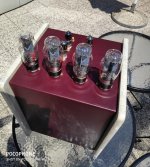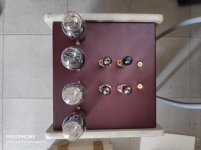Wow, is that an autoformer/center-tapped plate choke with ~2000H inductance? Or are you using two separate 530H chokes?
Each choke winding with DCR of 3.1k ohms, 16.66mA drawn across each, that's a lot of heat dissipated by the choke(s), is it not? Something like 0.86W dissipated in each winding?
Each choke winding with DCR of 3.1k ohms, 16.66mA drawn across each, that's a lot of heat dissipated by the choke(s), is it not? Something like 0.86W dissipated in each winding?
Cool! Which plate chokes are you using?
I am using PP plate chokes (Anodendrosseln) 62.19G.
0.85W for M85 chokes is nothing.
Wow, is that an autoformer/center-tapped plate choke with ~2000H inductance? Or are you using two separate 530H chokes?
Each choke winding with DCR of 3.1k ohms, 16.66mA drawn across each, that's a lot of heat dissipated by the choke(s), is it not? Something like 0.86W dissipated in each winding?
because of the DC cancellation there is no need for a gap (or a very little one), so inductance goes up very fast! Just like a PP OPT vs a SE OPT.
Wow, that PP anode choke is a real beast. 500H per winding. Really nice. I wish there was someone in the US who was making something like that available commercially. (Maybe there is but I don't know about it?) '
Thanks for the tip.
did you wind the anode choke yourself?
I don't know if I would call it "loftin-white", but the monkey idea is interesting. Do you really need R10?
I don't know if I would call it "loftin-white", but the monkey idea is interesting. Do you really need R10?
Anode choke is from here: Anodendrosseln
R10 is for security reason - on this scheme is only for testing purpose. I reality it will be from 0R to 1K.
I built last year similirar amp (SE): GU15 SE amp prototype
R10 is for security reason - on this scheme is only for testing purpose. I reality it will be from 0R to 1K.
I built last year similirar amp (SE): GU15 SE amp prototype
Suggestion
As a suggestion, try removing the 100uF cap bypassing the 3k6 cathode resistor to the output stage. Put a 40uF pp cap from the B+ to the junction of the cathodes, ultrapath Elliano style. Might have to tweek the value but I found the sound much better than the present 100uF cap arrangement. Attached is Thorsten Loesch's drd pp with the suggested cap arrangement.
Great design by the way, simple and elegant.
As a suggestion, try removing the 100uF cap bypassing the 3k6 cathode resistor to the output stage. Put a 40uF pp cap from the B+ to the junction of the cathodes, ultrapath Elliano style. Might have to tweek the value but I found the sound much better than the present 100uF cap arrangement. Attached is Thorsten Loesch's drd pp with the suggested cap arrangement.
Great design by the way, simple and elegant.
Attachments
Really nice!
Are you using input transformers to do the phase splitting? If so, what are you using there?
Are you using input transformers to do the phase splitting? If so, what are you using there?
That's excellent.
I used to have a simpler version of that kind of amp running. It had a 5687 per channel, run as an LTP with CCS in the tail, with the primaries of a push-pull EL84 output transformer being used as plate loads for the 5687 LTP. That was then DC coupled to a pair of 2A3s in push-pull driving Tango NC-45-5 OPTs. It didn't have enough gain to be used without a preamplifier. I had that amp running for around 25 years, but then it started to make weird noises, so I retired it. It did have a very attractive sound, though.
Yours is a much more highly refined take on the idea. Really, really nice. I'll bet it sounds great.
--
I used to have a simpler version of that kind of amp running. It had a 5687 per channel, run as an LTP with CCS in the tail, with the primaries of a push-pull EL84 output transformer being used as plate loads for the 5687 LTP. That was then DC coupled to a pair of 2A3s in push-pull driving Tango NC-45-5 OPTs. It didn't have enough gain to be used without a preamplifier. I had that amp running for around 25 years, but then it started to make weird noises, so I retired it. It did have a very attractive sound, though.
Yours is a much more highly refined take on the idea. Really, really nice. I'll bet it sounds great.
--
finally made chassis
Big box, 40 x 30 x 30cm. All iron in the box.
Big box, 40 x 30 x 30cm. All iron in the box.
Attachments
Member
Joined 2009
Paid Member
Big box, 40 x 30 x 30cm. All iron in the box.
Great!
The power tube is a single plate 2A3? The amplification driver is Russia's 6E5P Or other tube?
Those amplifiers look wonderful!
I bet they sound real good.
But . . .
I always thought that a Loftin-White amplifier was a single ended 2A3 with the driver DC coupled to the 2A3 grid.
I was looking at this thread to find a Loftin-White amplifier.
I did not know that a Loftin-White amplifier was push pull . . .
I guess I learn something every day.
I bet they sound real good.
But . . .
I always thought that a Loftin-White amplifier was a single ended 2A3 with the driver DC coupled to the 2A3 grid.
I was looking at this thread to find a Loftin-White amplifier.
I did not know that a Loftin-White amplifier was push pull . . .
I guess I learn something every day.
Last edited:
....I did not know that a Loftin-White amplifier was push pull . . . .
I don't think it was.
File:The original Loftin White amplifier.png - Wikimedia Commons
- Home
- Amplifiers
- Tubes / Valves
- 6C4C in PP (Loftin White)
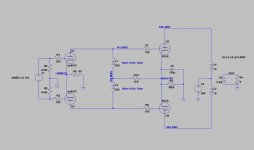

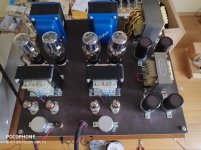
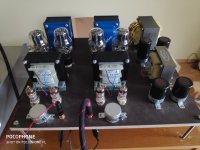
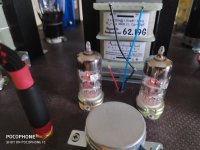
 Congrats!
Congrats!